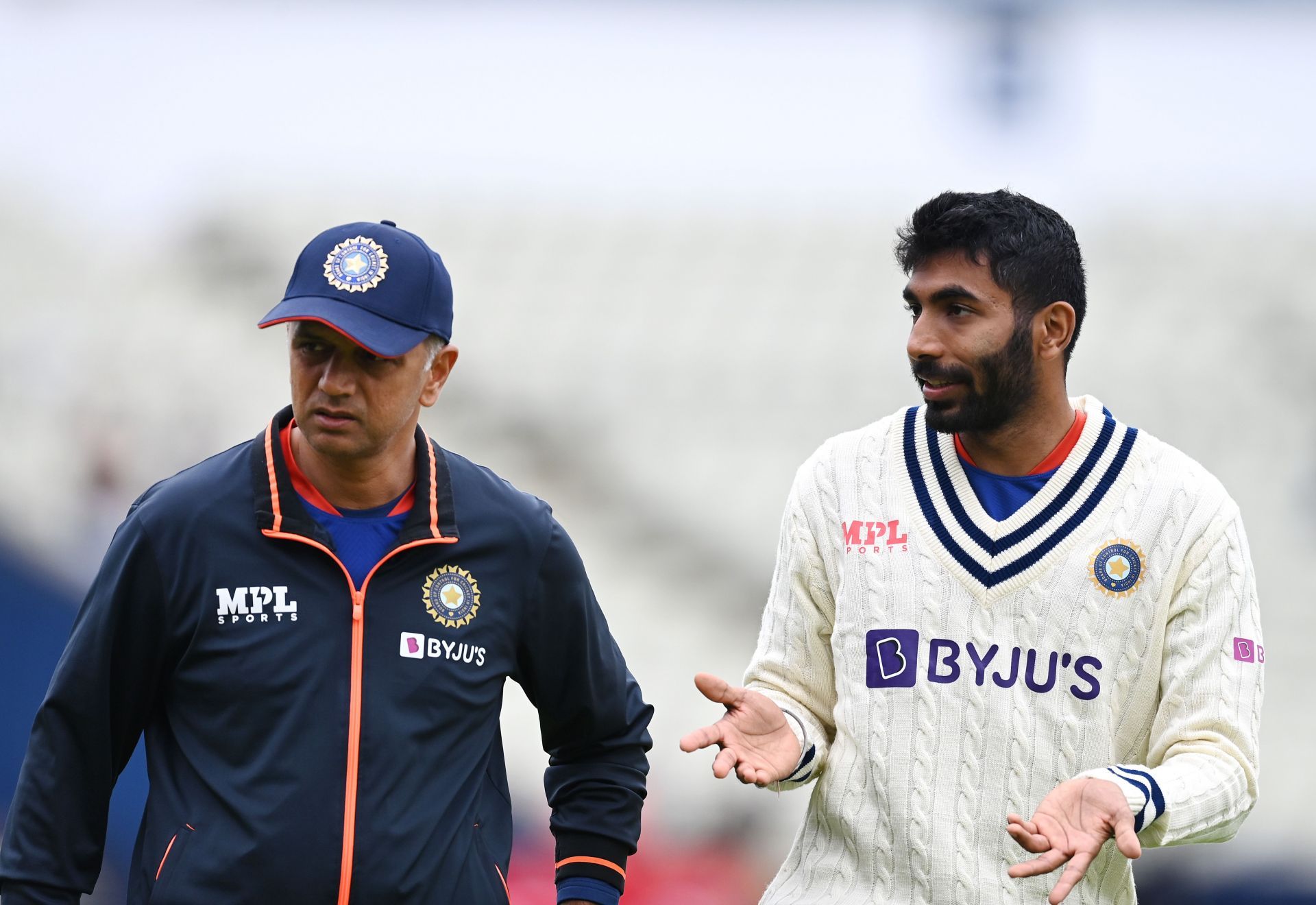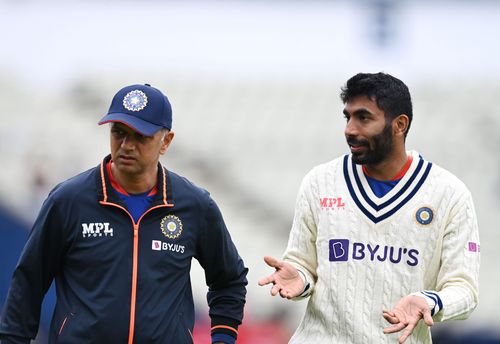
What's up with the Indian cricket team and their fourth-innings bowling?

July 3, 2022, Edgbaston. The Indian cricket team have skittled England out for 284 and have fashioned a 132-run lead in the process. Prior to this game, there had been murmurs around how the Indian cricket team might struggle against the hosts’ aggressive brand of cricket. On first-innings evidence, though, it couldn’t seem farther from the truth.
At the end of day three, the Indian cricket team have a 257-run lead, meaning that even when they lose their last seven wickets for 120 runs, they have a healthy fourth-innings total of 378 to play with. Such a target, by the way, has never been chased by England in Test cricket. India, too, very rarely, allow opposition sides to hunt down more than 300 in the last innings.
So, from many different standpoints, the game seems to be the Indian cricket team’s to lose. They obviously have to encounter England’s version of 'Bazball' but with Jasprit Bumrah, Mohammad Shami and Mohammed Siraj leading India’s charge, there is anticipation that they will get the job done.
But then, things start going pear-shaped.
The third ball Shami bowls is hacked away to the fence by Alex Lees. The boundary isn’t that important. It gets England four runs but the manner in which Lees marches down the track and swings with gay abandon, takes India aback.
Zak Crawley, who has endured a wretched run in Test cricket since the start of 2021, has also grown in confidence at the other end. The drives that usually extracted edges are now sizzling off the middle of the bat through extra cover. You could even argue it takes the Indian cricket team close to 20 overs to recover.
A change of ball, though, brings about a change of luck. Bumrah pitches a ball in the channel and gets it to deck back sharply, rattling Crawley’s off stump in the process. Post Tea, the Indian cricket team skipper continues weaving his magic, accounting for Ollie Pope with another excellent delivery. Joe Root then calls Lees through for a non-existent single and England, from being in control, are suddenly under pressure.
The Indian cricket team, meanwhile, are grinning from ear to ear. Virat Kohli is celebrating as if there is no tomorrow. Bumrah’s tail is up. Shami is getting the ball to talk like he was always meant to. With England still requiring 269 runs to win, there are no doubts that India are the side in the ascendancy.
Well, at least until Jonny Bairstow and Root take matters into their own hands.
The Indian cricket team fails to defend 378 in the fourth innings
Prima facie, it would be very tempting to say that India have been outclassed by England. To an extent, they were at Edgbaston. From an Indian perspective, though, this was the third time they had not managed to defend a total in the fourth innings this year, despite seeming in control of the match.
In Johannesburg, they had 240 to defend against South Africa. They had a world-class bowling attack at their disposal but floundered just when it mattered. The Proteas coasted to that target, scoring at more than 3.5 runs per over, with Dean Elgar starring.
A game later, South Africa repeated the dose. Elgar wasn’t at the forefront, but Keegan Petersen was. The Proteas scored at 3.33 runs per over and comfortably chased down a 212-run target. The Indian cricket team also lost that series, despite surging into the lead in Centurion.
At Edgbaston, something very similar happened. The Indian cricket team had 378 runs to defend but weren’t able to do so. England rattled along at just under 5 runs per over and put India under the sort of pressure they aren’t accustomed to.
There are a few other damning patterns too. In all of these games, the Indian cricket team fashioned advantageous positions. On each occasion, though, they seemed afraid of grabbing the game by the scruff of its neck.
In Cape Town, they allowed Petersen to dictate proceedings. In Johannesburg, they bombarded Elgar but South Africa still managed to score enough boundaries to keep themselves ahead. And in Birmingham, the Indian cricket team, for some reason, went into run-scoring mode even when England required more than 200 runs. Not only did they spread fields, they also used Ravindra Jadeja as a defensive option.
The initial reaction could be to underplay it and suggest that Bumrah, who was captaining for the first time in Test cricket at Edgbaston, just missed a trick. However, this is an issue that has permeated Indian cricket, irrespective of who is in charge. For the record, they’ve had three different captains in these games (Kohli in Cape Town, KL Rahul in Johannesburg, and Bumrah at Edgbaston). So, the tactics are bound to have been dissimilar. The outcome, though, hasn’t been.
Maybe then India are missing someone of Umesh Yadav’s ilk – someone who can leak runs but someone who can break the game open. In the 21st century, Umesh has the ninth-best strike-rate (45) in the third and fourth innings of a Test match (minimum 50 wickets taken). When talking about victories, Umesh stands sixth (38.1) – only behind Dale Steyn, Kagiso Rabada, Keshav Maharaj, Moeen Ali and Shami.
Or, it could be a case of the Indian cricket team not being brave enough. They’ve gotten themselves into situations where the game could’ve been won. But by allowing the opposition an avenue back into the game, they’ve almost always not made it count. They’ve also been overeager at times, often gifting the opposition quick runs and turning over the momentum of the contest.
The worrying bit, though, is that this hasn’t been a theme for large swathes of India’s cricketing history. Quite often, they’ve been able to defend targets. They’ve also been very tough to beat when they have runs on the board. That, however, is not a narrative they’ve followed overseas in 2022.
It could just be that they’ve hit three stumbling blocks in succession. Or, it could be a much deeper malaise – one where the mindset and the perceived lack of aggression become greater causes of concern. Whatever it is, it makes you question what’s up with the Indian cricket team and their fourth-innings bowling.
At Edgbaston, they should never have let the game drift as much as they did. England played well but the Indian cricket team should never have been defeated so convincingly.
They’ve tried different captains but they’ve had the same outcome. They’ve auditioned it against different oppositions. Yet, have had the same outcome. Maybe then, it’s time to introspect and truly understand what might’ve caused this. It won’t be easy, considering the Indian cricket team has, historically, not been bad at defending totals.
But now that they are venturing into that territory, a quick solution seems the need of the hour. Else, the anticipation that surrounded their cricket at the end of day three at Edgbaston, will only morph into trepidation every time they have to defend a fourth-innings target against high-quality batting sides.